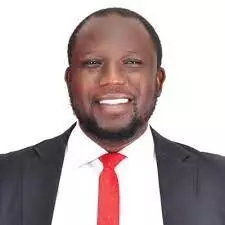
Dr. Solomon Chollom, a Virologist at the National Veterinary Research Institute (NVRI) Vom, Plateau, on Thursday, attributed structural challenges in laboratories as major factor militating against proper diagnoses of diseases. Chollom explained in Jos that accurate diagnoses are critical to patient care and management as laboratory data accounted for 70 per cent of decisions needed for […]

Dr. Solomon Chollom, a Virologist at the National Veterinary Research Institute (NVRI) Vom, Plateau, on Thursday, attributed structural challenges in laboratories as major factor militating against proper diagnoses of diseases.
Chollom explained in Jos that accurate diagnoses are critical to patient care and management as laboratory data accounted for 70 per cent of decisions needed for disease management.
He lamented that the quest for effective diagnoses had been derailed by many factors some of which were structural, while others were human.
According to the virologist human deficiencies such as qualification, experience, skills and attitude of personnel played roles at various stages in laboratory diagnoses.
He insisted, however, that structural challenges had greater negative impact on accurate laboratory diagnoses.
He said that poor medical laboratory infrastructure, unstandardised laboratories and professional rivalry were some challenges that impeded laboratory diagnoses of diseases.
The virologist said that for a medical laboratory to function effectively, it had to have basic infrastructure such as diagnostic equipment, steady power supply and an acceptable ambience.
Collom also lamented that many laboratories were poorly equipped and failed to meet the minimum requirements for laboratory diagnoses, especially in an era where communicable and non-communicable diseases had become sophisticated to identify and manage.
The virologist said that constant power supply was still a huge challenge, adding that many facilities claimed to have standby power generating sets but used them sparingly.
He also told NAN that most laboratories shunned the fact that cooling systems needed to run non-stop to keep diagnostic reagents and equipment in their best conditions.
“The inability to power cooling equipment for 24 hours nonstop, diminishes the quality of stored reagents and ultimately affects the quality of diagnosis,’’ he stressed.
Chollom also decried the proliferation of unstandardised laboratories, especially in the rural areas of the country.
He stated that most medical laboratories operated without the full complement of Quality Management system.
“It is one thing to have a laboratory fully equipped, and another to have the laboratory processes standardised to guarantee accuracy, repeatability and acceptability.
“This is in view of the fact that so many physical, human and biological factors bear on the result of clinical investigations,’’ he said.
The virologist also condemned rivalry between healthcare professionals which had led to a derailment of their professional duties making the patient to suffer unnecessarily.
“The laboratory and the clinic are today notorious for rivalry when they are expected to work in synergy to diagnose and manage patients,’’ he stressed.
Chollom opined that to make laboratories compliant to quality management, owners should enrol for national laboratory accreditation using the International Standards Organisation 15189:2012 guidelines.
He stated that successful laboratory accreditation came with many advantages such as client satisfaction, recognition by global partners for collaboration and partnership.
According to him the challenge of inter-professional rivalry can be solved partly by government and largely by the professionals.
“Government must be seen to be fair to all employees no matter their field.
“The conditions of service and remunerations must not suggest favouritism and the dominance of one professional body heading all health ministries and hospitals at federal and state levels.
“This has been frowned at by many and must be addressed,’’ Chollom said.




